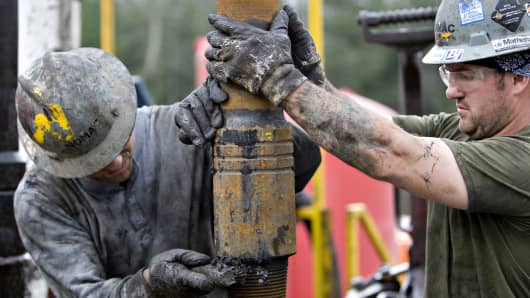Oil deals are back.
When crude prices crashed beginning in the summer of 2014, the industry started weathering one of the biggest oil busts since the first Texas gusher spewed oil from the ground more than a century ago. Lenders pulled back, rigs were idled and wells shut in.
But more than two years later, the sector is enjoying a modest revival – both in the U.S. and around the world — thanks to a gradual rise in oil prices and an easing of credit that renewed investor enthusiasm for new deals.
Last week, four global oil and gas giants signed nearly $15 billion in new deals on a single day. That's a sign that companies, creditors and investors are starting 2017 in an optimistic mood, according to Wood Mackenzie, an industry consultant.
The deals, announced Thursday, included:
- Shell sold an $8.5 billion interest in Canadian oil sands to Canadian Natural Resources.
- Shell and Canadian Natural Resources jointly bought Marathon's oil sands interests for $2.5 billion.
- Marathon spent $1.1 billion on oil acreage in the Permian Basin.
- Exxon Mobil bought 25 percent stake in a natural gas project in Mozambique for 2.8 billion from Eni, an Italian oil and gas producer.
Last year, oil and gas industry deals reached $195.7 billion, the second year of the oil price downturn, matching 2015 levels. But as crude prices bounced off 12-year lows in February of last year, the rebound helped spark a pickup in both the number of deals and overall dollar volume.
Industry analysts have also turned more upbeat as oil prices have recovered from the 2014 crash.
"As we move into 2017, deal-makers are in high gear, with a green flag and a full tank of gas," PwC said in a report earlier this year.
As oil producers have turned more optimistic, so have their lenders, according to a recent report from industry analysts at Deloitte.
"If oil price is one big driver of M&A in oil and gas, we've seen that credit availability is likely another," they said.
The rebound in oil prices has also helped dampen the drop in the value of unprofitable oil and gas reserves — which amount to collateral used to back up loans. As oil prices recover, oil producers have more collateral to borrow against.





